From South America To Brain Surgery: How A Concussion Saved Simon Hetrick’s Life
The Maryland native discusses brain haemorrhages, music, and his new series.
It’s easy to overlook the vulnerability of humankind. No longer fit for the treetops, we are slow and cumbersome on land and pathetic in water, while our flaccid skin shields bones that too often snap like dry twigs.
We’re not built to last, yet we live as if a tiny glitch in our brain couldn’t bring our little race to an abrupt end at any moment.
Taking a blunt object to the skull is usually a bad omen for a person’s longevity. Back in February, Simon Hetrick launched a fly-away oop when his leash snapped tight, whipping his board into the back of his head. An additional blow to his temple while trying to scramble landward consolidated his concussion.
Intending to rest and begin a slow recovery, Simon flew to Portugal to visit his girlfriend. But after a month without any relief from his symptoms, he returned to the U.S. for brain scans. There, he was rushed to the emergency room to confront an underlying condition with far more sinister implications.
Head trauma typically destroys lives. Rarely does it save them. Below, Simon discusses the events following his diagnosis and introduces the first instalment of his new series, See You Next Time. The clip from South America features a score composed entirely by Simon — and streaming live here. It’s a haunting concoction of OG Goons of Doom and Silver Jews.
Interview by Michael Ciaramella.
Stab: Can you walk me through what happened after your head injury?
Simon: After coming home from Portugal, I got a CT scan. The results sent me straight to the emergency room because they found bleeding on my brain. That’s when they discovered I had an AVM (arterial venous malformation), which is essentially a cluster of tangled blood vessels and arteries. You could have one of these your whole life without knowing it and then suddenly suffer a stroke or an aneurysm.
My grandfather is a coroner in Pennsylvania. Not long after this happened to me, he had a case involving a 40-year-old kayaker. People initially thought he had drowned, but it turned out he had an undiagnosed AVM and suffered a stroke. That was the concern with me too.
The AVM is completely unrelated to your concussion, right?
Completely unrelated. If it weren’t for the concussion, I probably never would have discovered the AVM since I wouldn’t have had the CT scan.
I’ve likely had the AVM for a long time, so in a way, I got lucky. The concussion turned out to be a bit of a blessing in disguise, even though the surgery made the concussion worse—it’s just another trauma for the brain to handle.
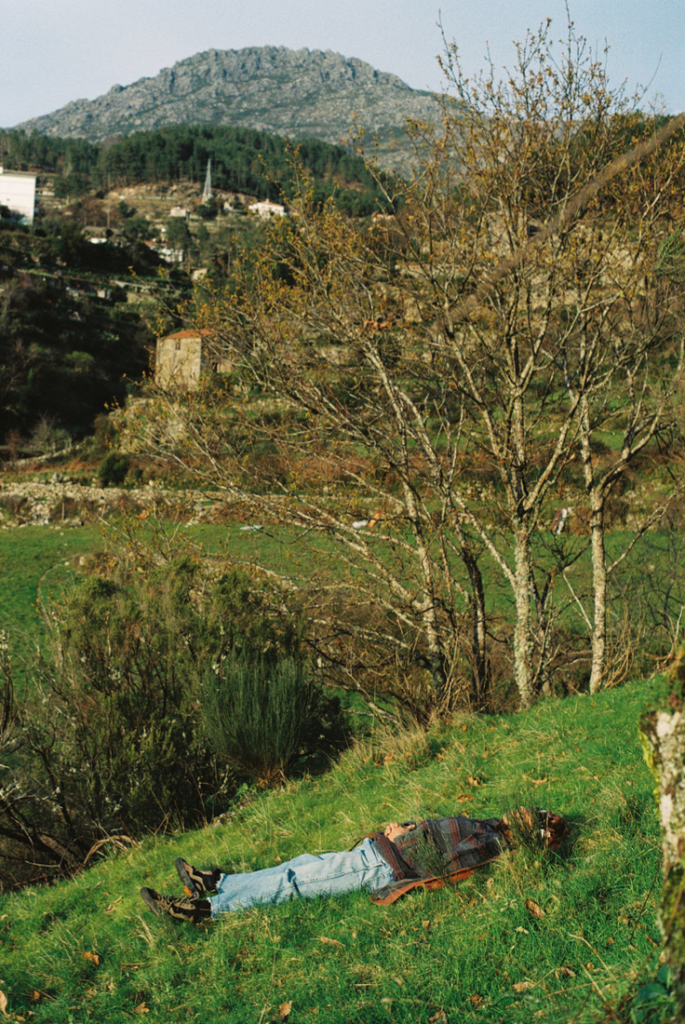
How soon after they found the AVM did you have to go into surgery?
Basically, they found the AVM and sent me in for an angiogram the next day. That’s when they go up through the femoral artery in your leg, all the way to your brain stem, and take detailed images of the brain. It’s a pretty wild process—like having a 3D printout of all the veins in your head.
Were you awake the whole time?
No, I was completely out—it’s about a two-hour process. Initially, the surgeon considered drilling through my skull, but the AVM was about two inches deep into my brain. That wasn’t really an option since she’d have to go through too much brain tissue to get to it and remove it.
Instead, she went the same route as the angiogram—up through the femoral artery, through the brain stem, and into the brain using a catheter called the Magic, which is the smallest one they use on humans. They injected glue into the cluster to stop the blood flow, preventing it from getting caught up and causing bleeding. It’s like fixing a hose that’s kinked and about to burst.
They did this three days after I got to the hospital, and the whole procedure took about four hours. The aftermath of the procedure is pretty gnarly. They make you lie flat on your back for six hours without moving a muscle. I genuinely thought I was dead—I felt like I was in purgatory for two hours. I was so out of it from the anaesthesia and drugs, just totally disoriented and not really aware of what was happening.
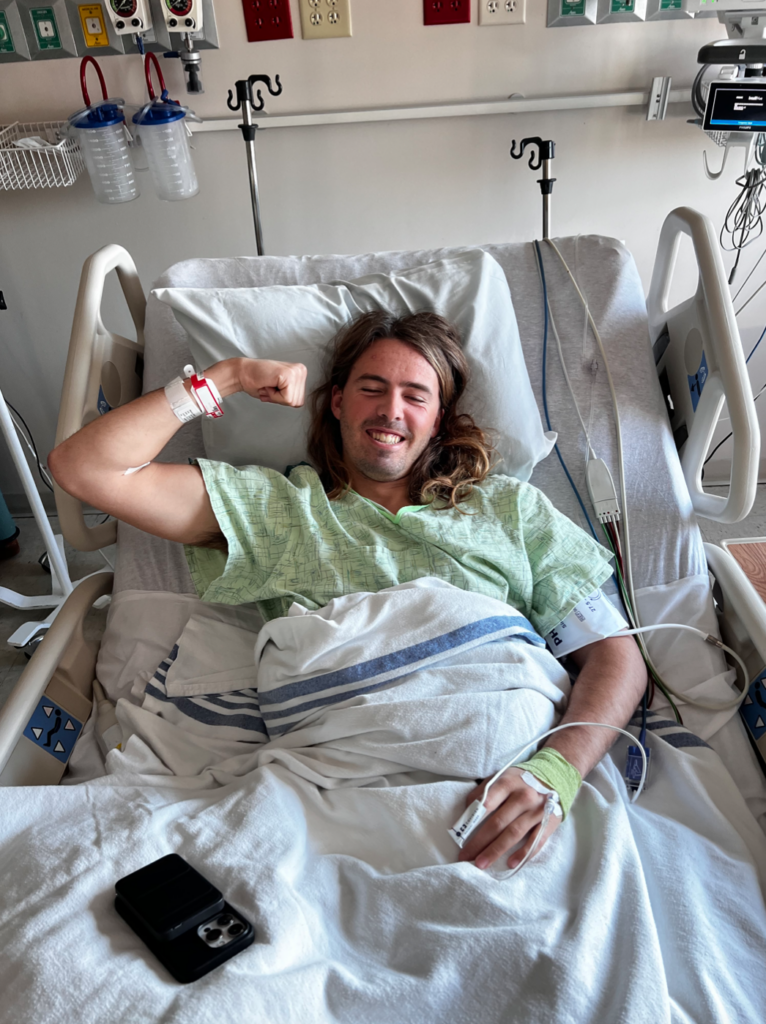
What were you thinking about?
It wasn’t really anything specific—I think I just lost the sensation of actually being there. The storm outside and the sounds of the ICU didn’t help, but I was lucky to have my family there to give me moments of clarity and remind me I was in the hospital, between sinking into that falling-in-a-dream feeling. Luckily, aside from the disorientation right after the surgery, it went really well.
The next day, they want you back on your feet pretty quickly. It’s amazing what they can do because it felt like something that would have left me immobile for much longer. But the day after, they had me taking these tiny, baby steps around, and by the fourth day, they discharged me from the hospital. I was still feeling weak but much better.
They didn’t want me to start any physical therapy for a couple of weeks to let everything heal. After that, I eased into some very light PT. My girlfriend came over three or four weeks after the surgery, and we started going on a lot of walks. At first, it was just about movement and regaining my strength. After about a month or two, I started to feel better, less irritable, and worked on vision, balance, and some light endurance in PT. Concussions are very vision-oriented, and it’s been a huge part of my process.
That’s the gist of the injury. I don’t want to hype it up or make it seem like some huge ordeal I had to endure because, honestly, I feel incredibly lucky just to be here.
How are you feeling now? Are you able to get back in the water?
It’s been about seven months since the injury and five months since the surgery. I still experience a lot of fatigue, and some environments with noise and cross-talk are still a bit too much for me, but overall, I’m improving. For the past two months, I’ve been allowed to do some light surfing, so I’ve been slowly getting back into the water—mostly on a longboard or a twin fin, trying to avoid falling or jolting my head too much, even on flat water. I went out in some head-high waves recently and felt like it was a bit too much; my brain still isn’t accustomed to that kind of movement. But just getting back in the water feels like a breath of fresh air—it’s been healing, and I’m confident I’ll be pushing myself again once I’m fully recovered.
I feel incredibly lucky to be here at all. If I hadn’t gone through the concussion and everything that followed, there was an 80% chance I could have had a stroke. So, no matter what I’m facing now, I’m grateful to still be touching the ocean and spending time with the people I love. That said, I’ll probably be in recovery mode for a few more months. Seeing a specialist has been crucial.
For anyone dealing with concussion issues, find someone who won’t just say, “Give it time.” That might work for the first few months, but if it drags on, look for a functional neurologist—someone who will help you actively work on things like vision, balance, and headaches. I’m so lucky to have found someone now because it’s kind of a barren land for doctors on the Eastern Shore.
Tell me about your recent trip to South America.
That was last May. I went down there on a bit of a whim. I hadn’t been before, but my filmer buddy Clemente Valdés told me it was going to get good, so I took his word for it. I was also keen to check it out since I’d wanted to go for a while.
I ended up staying for a month—first a couple of weeks on my own, then I crashed with Clemente for a few more weeks. The crew down there was really welcoming, and there’s a lot of potential to get clips down there.
What was that like surfing a wave of that quality and fucking heaviness?
My only previous experience with a wave like that was when a sandbar formed in New Jersey, but this was on a whole different level. I had never really been exposed to waves like that before. Coming from the East Coast, it felt somewhat like the Lighthouse setup but even more perfect—some of the longest, most flawless waves I’ve ever seen.
It was a bit of a historic run, so I don’t want to blow out the place too much. This past year, a lot of people have been heading down there, and when I was there, it was a particularly touchy time to be a visitor—it was pretty localised, but I think it’s important to keep it that way because it’s definitely getting more crowded, like much of South America and the world in general. I went solo and was lucky to be welcomed with open arms.
The crew and the community were great. Surfing with mountains in the background was surreal, and a few sessions were some of the most memorable of my life. I caught the best wave of my life there on a bigger day
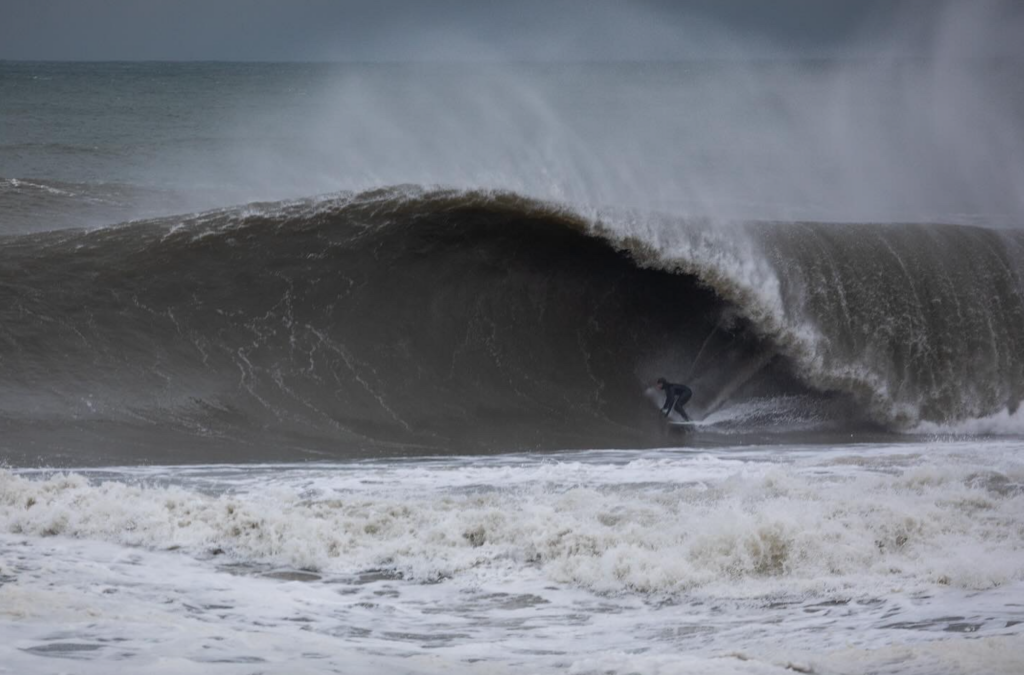
You’ve been scoring your own surf parts for a while, right?
I’ve been scoring my own surf parts for about four or five years now, but I’m still figuring out my flow with music. It’s tricky because what others might enjoy doesn’t always align with what I’m completely happy with. I love making music, and this will be the first song I’m releasing on Spotify. I have an album done and it’s in the process of being recorded right now.
One great thing about this time off due to the concussion has been having the chance to focus on music. I’ve been working on some of these songs for years, and it feels great to finally see them coming together. My plan is to self-release the album. I might see if I can get to a professional studio for the rest of it. For now, I’ve been recording guitar, vocals, and a few other instruments on my own, with a bit of an Elliott Smith vibe. I’m excited to get these songs out there and release some new stuff.
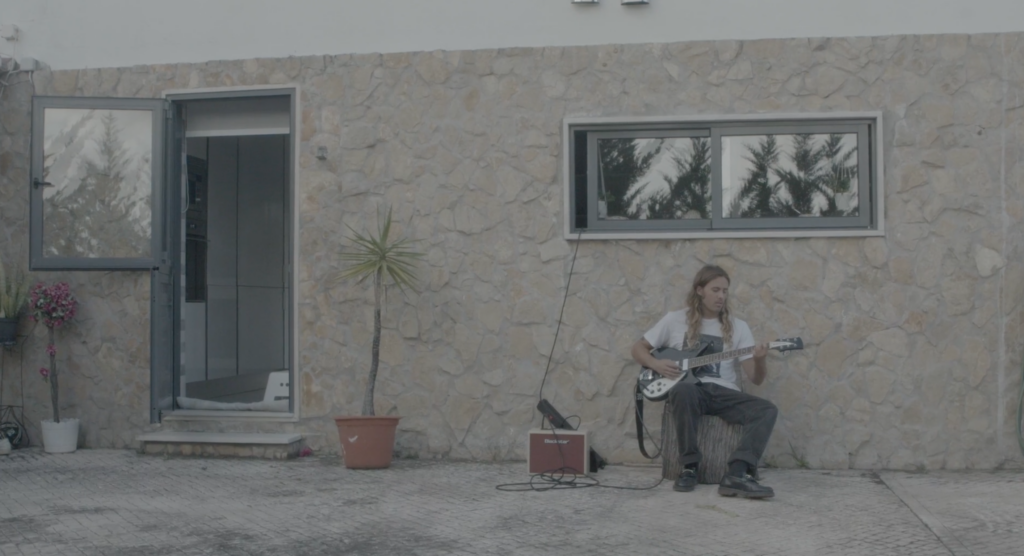
Are you in a band too?
I’m in a thrash metal band called Crusader, but it’s been on the back burner because it’s a little too loud for me right now.
How many episodes do you plan to drop?
This episode focuses on South America, and the second episode will be in Morocco. My girlfriend Elina and I went there last November, initially planning to chase a swell and film for a week but ended up staying a month. We loved the place.
The Morocco episode will be a bit longer. We’ll be incorporating some local music and a lot of handycam footy. We plan to release it in late October.
About a month after that, I’ll be dropping the Portugal episode featuring Diogo Martins, Seth Conboy, Gony Zubizeretta and some other friends. I’ll be releasing some footage from home as well.
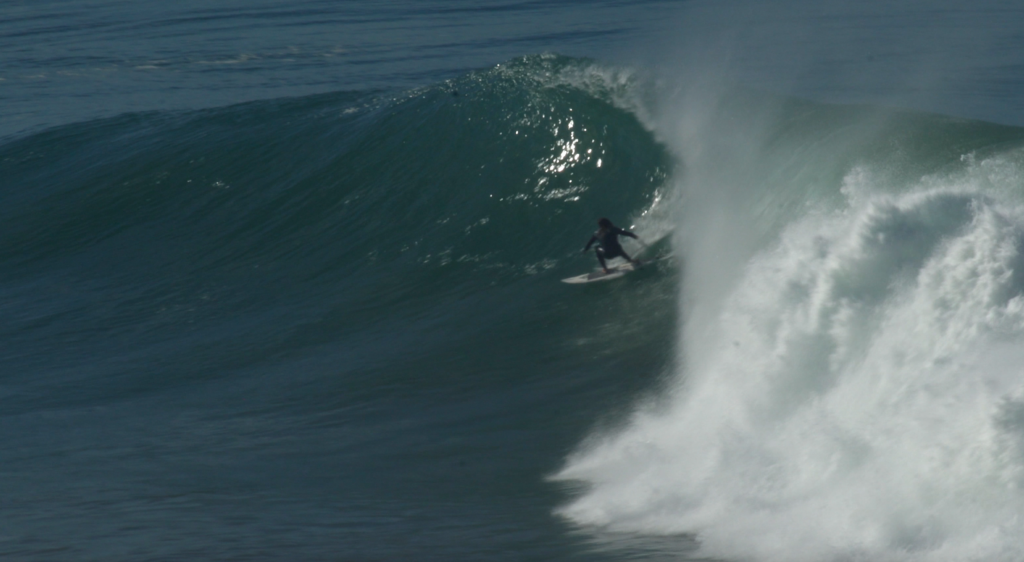
Thanks for sharing your story man. It sounds like you’ve been through a lot.
It’s funny because it’s hard to know exactly how much to share, but I hope my story can reach someone and give them a little bit of confidence. If they’re dealing with something serious, maybe they could reach out and share their experience with me. I definitely feel lucky, despite how gnarly the story might seem. I want the main takeaway to be that I’m grateful to be here, still going through this. In a way, it’s part of what might have saved my life.














Comments
Comments are a Stab Premium feature. Gotta join to talk shop.
Already a member? Sign In
Want to join? Sign Up